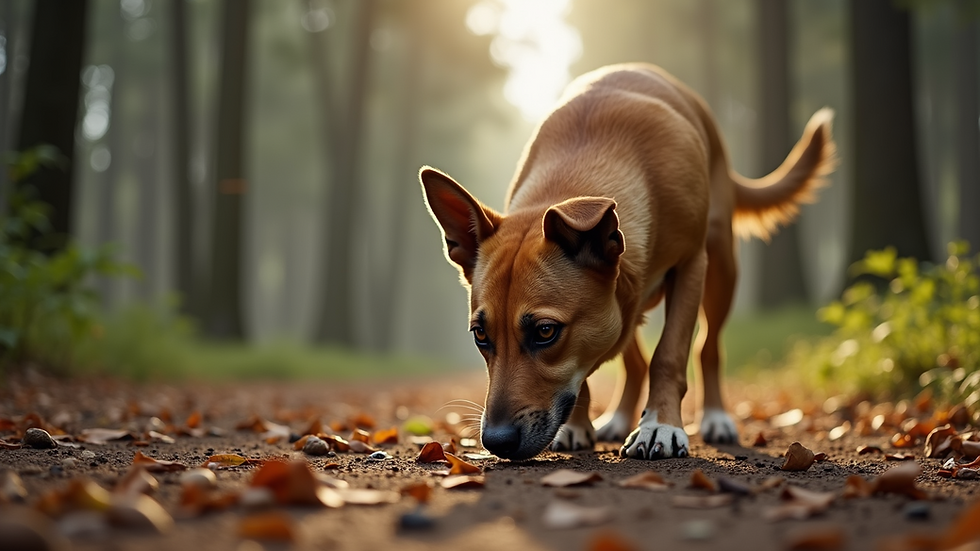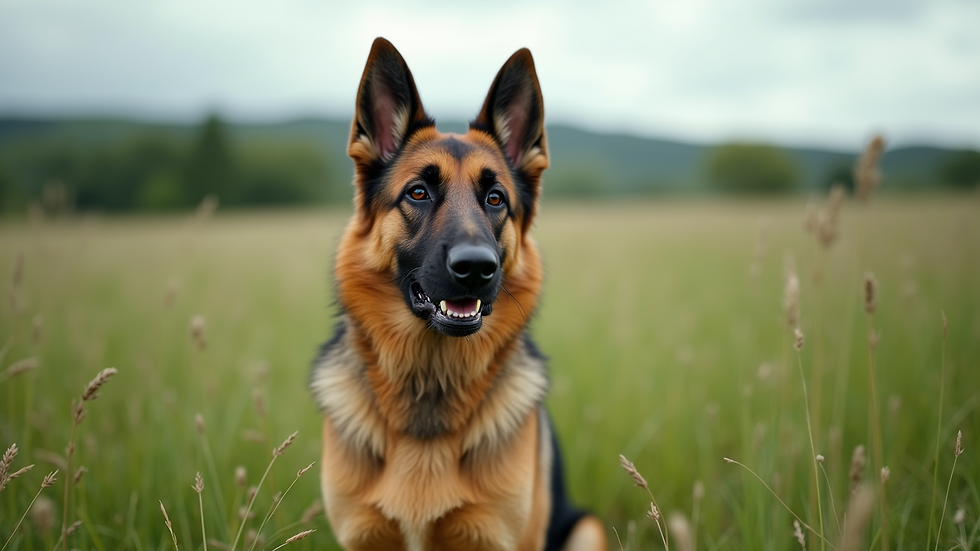The Vital Role of Search and Rescue Dogs
- Jamie Genereux
- Sep 29
- 4 min read
When a beloved pet goes missing, the panic and worry can feel overwhelming. You want to do everything possible to bring them home safely. That’s where the incredible skill of dogs trained in scent detection comes into play. These dogs are not just pets - they are lifesavers, specially trained to track scents in the most challenging environments. Let me walk you through why these dogs are so vital, how scent detection works in rescues, and what you can expect if you ever need their help.
How Scent Detection in Rescues Works
Have you ever wondered how dogs can find someone lost in a vast forest or a collapsed building? It all comes down to their extraordinary sense of smell. Dogs have up to 300 million olfactory receptors in their noses, compared to about 6 million in humans. This means they can detect scents at incredibly low concentrations.
In rescue operations, dogs are trained to pick up the unique scent of a missing person or animal. They follow this scent trail, even if it’s days old or mixed with other smells. The process involves:
Scent imprinting: Dogs are introduced to the specific scent they need to track, often from a piece of clothing or an item the missing pet has used.
Tracking: The dog follows the scent trail, which can lead through forests, urban areas, or disaster sites.
Alerting: Once the dog locates the missing individual, it signals the handler, often by barking or sitting near the spot.
This method is incredibly effective because scent particles cling to the environment and move with the wind, allowing dogs to track over long distances and difficult terrain.

Why Scent Detection is a Game-Changer in Rescue Missions
Scent detection is not just a neat trick - it’s a game-changer in rescue missions. Imagine a pet lost in a dense forest or a disaster zone where human searchers can’t easily go. Dogs trained in scent detection can cover large areas quickly and with precision.
Here’s why scent detection stands out:
Speed: Dogs can cover miles in a short time, much faster than humans.
Accuracy: Their noses can distinguish the target scent from countless others.
Versatility: They work in all weather conditions and terrains.
Emotional support: Their presence can calm anxious owners and boost morale during stressful searches.
For pet owners, this means a much higher chance of finding their lost animals, even in tough situations. The combination of technology and canine skill is what makes services like those offered by PackLeader PetTrackers so effective.
What Dog is Best for Search and Rescue?
Not all dogs are cut out for search and rescue work. The best candidates have a strong drive to work, excellent scenting ability, and a calm but focused temperament. Some breeds are naturally more suited to this kind of work, including:
German Shepherds - Known for intelligence and versatility.
Labrador Retrievers - Friendly, eager to please, and great noses.
Bloodhounds - Famous for their unmatched scent tracking skills.
Belgian Malinois - Agile, smart, and highly trainable.
Springer Spaniels - Energetic and excellent scent detectors.
However, it’s not just about breed. The dog’s training, socialization, and bond with the handler are crucial. Many rescue organizations carefully select and train dogs to ensure they can perform under pressure and in complex environments.

How You Can Help If Your Pet Goes Missing
Losing a pet is heartbreaking, but there are steps you can take to improve the chances of a safe return. Here’s what I recommend:
Act quickly: The sooner you start searching, the better.
Use scent items: Provide a piece of your pet’s bedding or a favorite toy to the search team or dog handler.
Share information: Post flyers, use social media, and alert local shelters.
Contact professionals: Reach out to specialized teams that use scent detection dogs.
Stay calm and hopeful: Dogs can find pets even after days, so don’t give up.
If you’re in a difficult-to-track scenario, like dense woods or rugged terrain, professional help with trained dogs is invaluable. They can cover areas you might not be able to search effectively.
The Future of Pet Recovery with Canine Scent Tracking
The technology and training behind scent detection dogs continue to evolve. Organizations like PackLeader PetTrackers are refining their methods to bring more lost pets home safely. They combine expert dog training with GPS tracking and data analysis to improve search efficiency.
Imagine a future where every lost pet has a better chance of being found quickly, thanks to advances in canine scent tracking and technology. It’s a future where the bond between humans and dogs saves lives every day.

If you ever find yourself in the difficult position of searching for a lost pet, remember that these incredible dogs and their handlers are ready to help. Their skills, combined with your quick action, can make all the difference.
By understanding the vital role of scent detection in rescues and the power of trained dogs, you’re better prepared to act if the unthinkable happens. Keep hope alive, and know that help is just a call away.



Great read! I found your points really helpful, especially for students who often struggle with managing academic work. Sometimes even a small tip can act like a dissertation helper by making the process clearer and less stressful. Looking forward to reading more of your insightful posts!